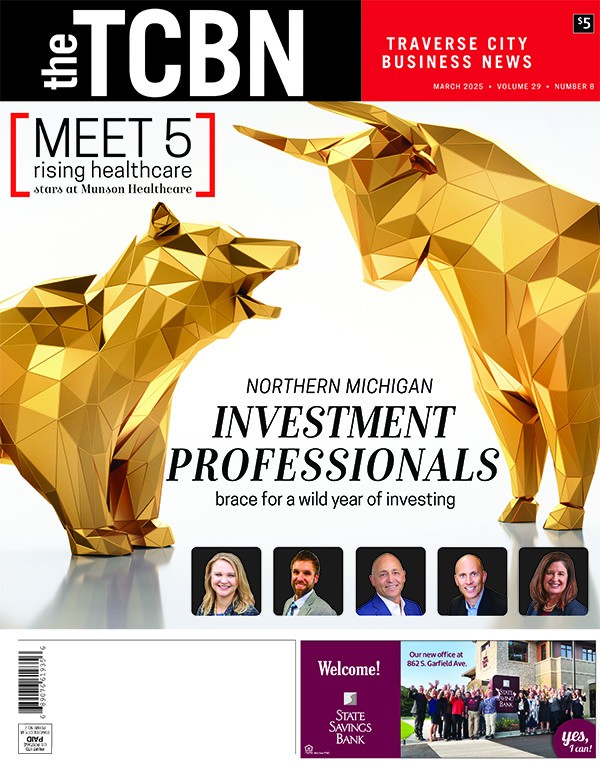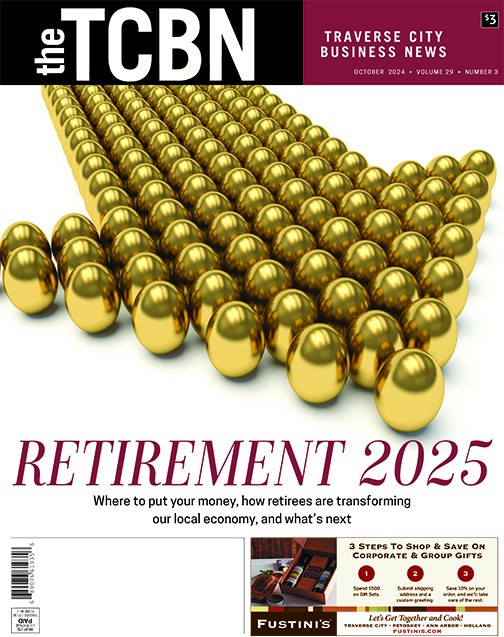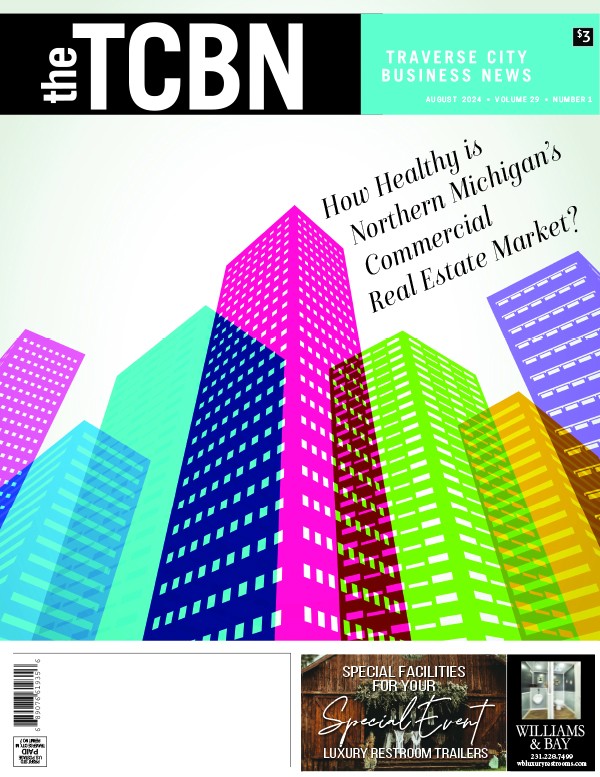Laws, Infrastructure and Taxes: The challenges facing commercial real estate in Northwest Michigan
April 2025

Northwest Michigan, known for its picturesque landscapes, vibrant small-town communities, and growing tourism sector, has seen steady commercial development over the past decade. However, despite its economic potential, commercial real estate (CRE) in the region faces significant hurdles that impact investors, developers, and business owners alike. Challenges such as regulatory constraints, infrastructure limitations, tax burdens, and fluctuating incentives make navigating this market increasingly complex. Understanding these factors is crucial for stakeholders looking to expand or invest in commercial properties in the region.
Incentives: A Double-Edged Sword
Incentives play a crucial role in attracting investment into northwest Michigan’s commercial real estate market. Various tax credits, grants, and economic development programs help businesses offset costs, making it more appealing to build or expand in the region. Programs like the Michigan Economic Development Corporation grants, Opportunity Zone tax incentives, and local Downtown Development Authority incentives have been pivotal in fostering growth in areas like Traverse City, Petoskey and Manistee.
However, access to these incentives is often limited by bureaucratic red tape and eligibility requirements that can be difficult to meet. Many developers find that while these programs exist, the approval process can be cumbersome, leading to delays and increased costs. Additionally, some incentives are tied to job creation or specific industries, leaving many CRE projects ineligible for financial assistance. The challenge remains in balancing government support for commercial development while ensuring accountability and fiscal responsibility.
Regulatory Hurdles: Zoning and Permitting Woes
Zoning and permitting regulations present another substantial challenge in northwest Michigan’s CRE market. Many municipalities have outdated zoning laws that do not align with modern commercial real estate needs, leading to difficulties in securing approvals for mixed-use developments, adaptive reuse projects or industrial expansions.
The permitting process is another significant roadblock. Developers often face extended wait times for approvals due to underfunded or overburdened local government agencies. This is particularly problematic for larger projects requiring environmental impact assessments, traffic studies or rezoning applications. In some cases, community opposition to new commercial developments – often fueled by concerns over congestion, aesthetics, or environmental preservation – can lead to further regulatory delays.
These regulatory hurdles not only slow down the development process but also increase project costs, making it difficult for small and mid-sized developers to compete in the market.
Infrastructure Challenges: Capacity and Availability
Infrastructure limitations also pose a serious concern for commercial real estate development in northwest Michigan. The region’s roadways, water supply, sewage systems and broadband connectivity have struggled to keep pace with growth, creating barriers for new developments.
In many areas, roads and highways lack the capacity to accommodate increasing commercial traffic, leading to congestion and logistical challenges for businesses relying on freight and delivery services. Similarly, older water and sewage systems in some townships require substantial upgrades to support commercial expansion. The cost of upgrading infrastructure often falls on developers, making projects less financially viable.
Addressing infrastructure deficiencies requires coordinated efforts between local governments, state agencies and private investors. Without proactive investment in modernizing these systems, commercial real estate growth in the region will continue to face constraints.
The Impact of Taxes on Commercial Real Estate
Tax policies significantly influence the viability of commercial real estate investments in northwest Michigan. Property taxes, business taxes and transfer taxes can be considerable burdens for commercial property owners and tenants, especially in high-growth areas like Traverse City, Charlevoix and Petoskey.
Michigan’s property tax structure, which limits annual increases in assessments but allows for substantial reassessments upon property transfers (uncapping), can create unpredictability for investors. Business owners leasing commercial space often face high operational costs due to increasing property taxes, which can drive tenants to look for locations with more favorable tax structures.
Additionally, some municipalities impose local business taxes or special assessments to fund infrastructure improvements or downtown beautification projects. While these initiatives enhance the commercial environment, they also add financial strain on businesses, particularly small enterprises operating on thin margins.
Policymakers must balance the need for tax revenue with incentives that keep commercial real estate development attractive.
The Effect of Interest Rates on Commercial Real Estate
Rising interest rates have had a profound impact on the commercial real estate market in this region. The CRE Market in 2023 saw the brunt of this as interest rates climbed coming out of 2022, buyers and investors played the waiting game to purchase to see if rates would fall. The total volume of CRE sold in Grand Traverse County in 2023 fell to $33 million, down from $59 million in 2022. As interest rates remain steady, the total volume of CRE sold picked back up in 2024 to a record $62 million.
Higher borrowing costs make it more expensive for investors and developers to finance new projects, leading to slowed growth and reduced transaction volumes. Many businesses seeking to lease commercial spaces are also feeling the pressure, as landlords pass down increased mortgage expenses through higher rental rates. Additionally, fluctuating interest rates create uncertainty, making it difficult for developers to plan long-term investments. With the Federal Reserve’s monetary policy shifts influencing credit availability, many stakeholders in the CRE sector must adapt their financial strategies to navigate these economic changes effectively.
Looking Ahead: Navigating the Challenges
Despite these challenges, demand remains strong and northwest Michigan remains a desirable location for commercial real estate investment, thanks to its strong tourism industry, growing population, and business-friendly initiatives. However, overcoming regulatory, infrastructure, and tax-related hurdles requires collaborative efforts between developers, policymakers, and local stakeholders.
By addressing these obstacles, northwest Michigan can create a more sustainable and attractive commercial real estate market that benefits investors, businesses, and local communities alike. The region’s economic growth depends on a balanced approach that encourages development while preserving its unique character and quality of life.
Kevin Endres, PE, SIOR, CCIM, is owner/broker of Three West Commercial.














